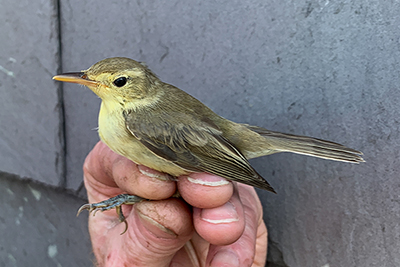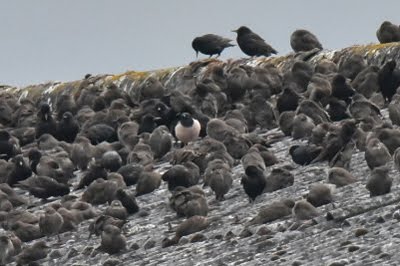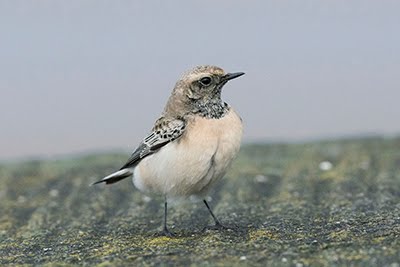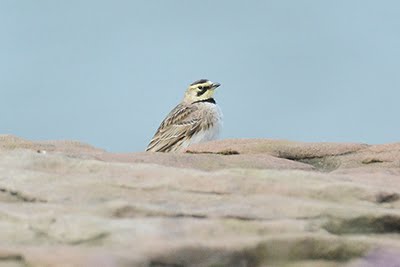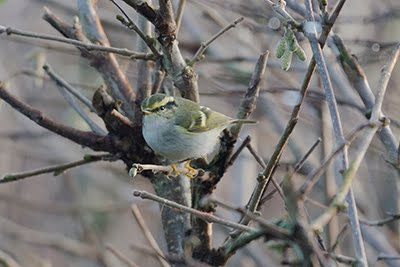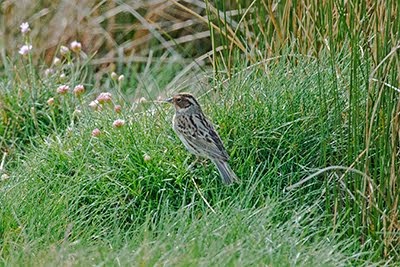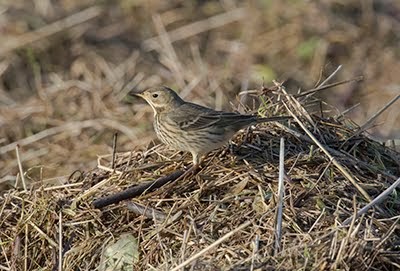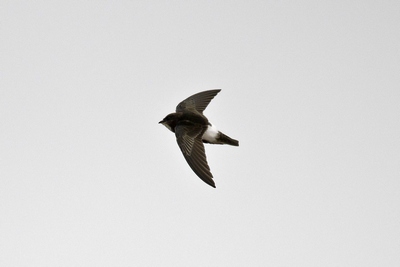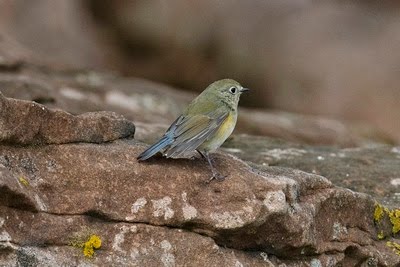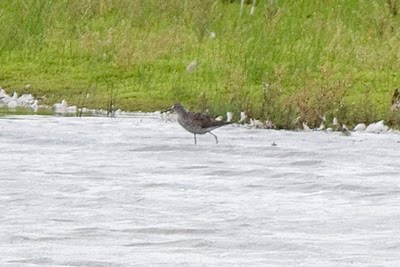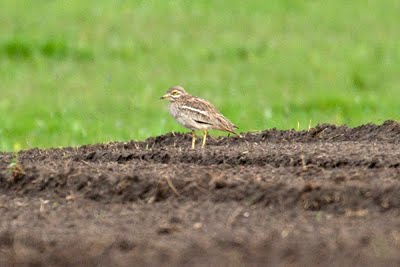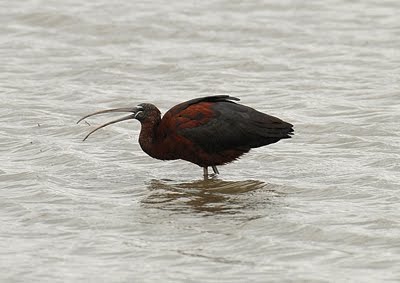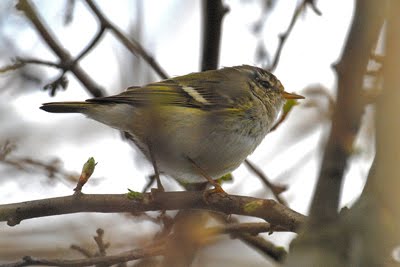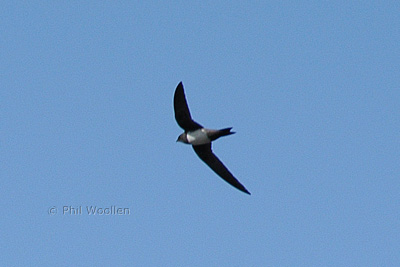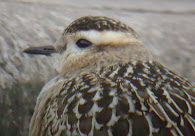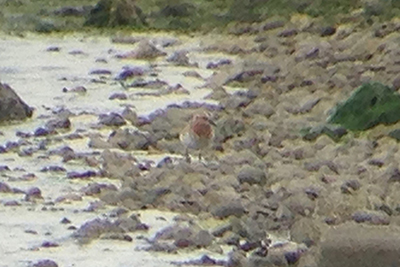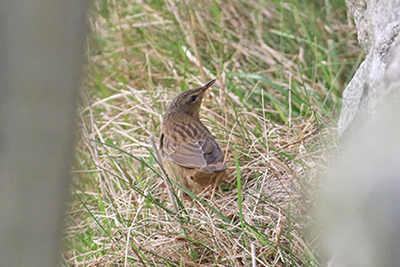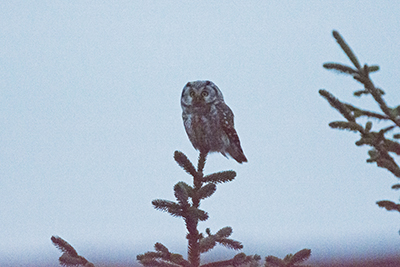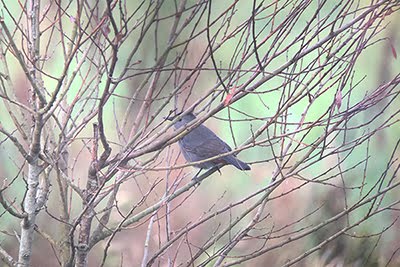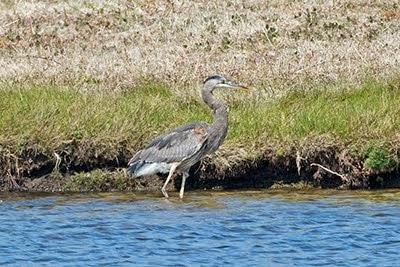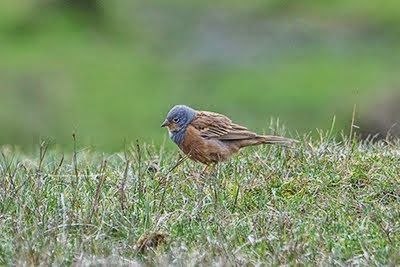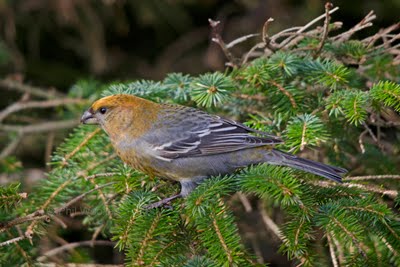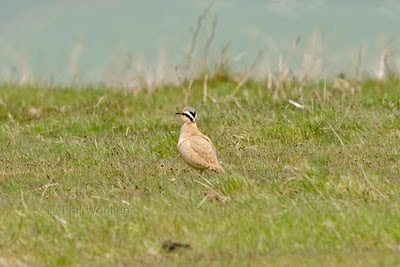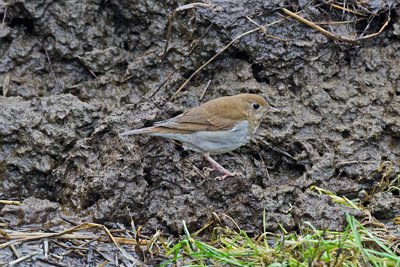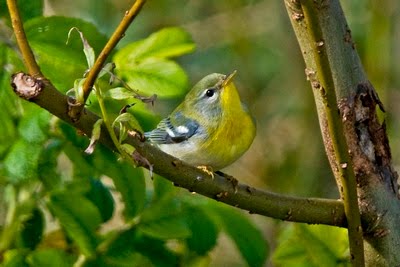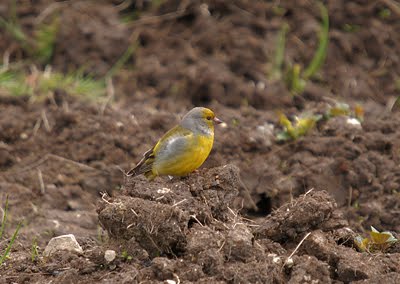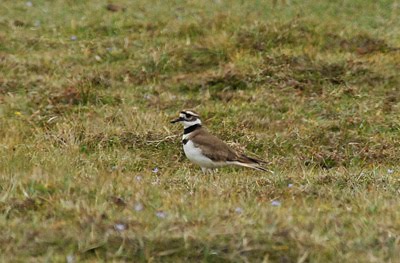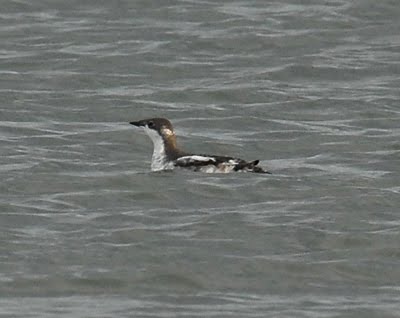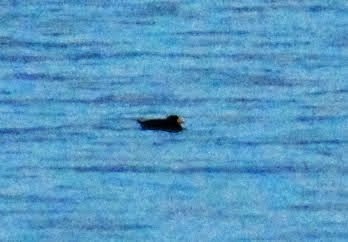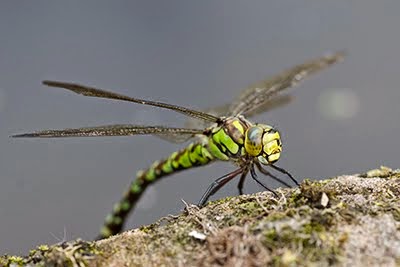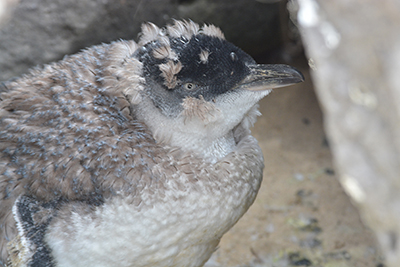The planets definitely aligned yesterday despite the day starting looking as if it was going to be a bit of a disaster. Rough seas aborted our planned trip to the Skerries to ring Arctic Tern chicks and I was already on my way to Bangor when Steve rang me to say the trip had been delayed until later in the morning. No problem - I'd been meaning to call into Cors Dydga RSPB reserve, when in the area, to try and see the long staying Savi's Warbler. The last one I saw in the UK was over 15 years ago and although they're pretty regular in the SE and SW they're not so common this far north. Once mooted as a potential colonist they first started breeding in the UK at Stodmarsh in Kent which is where I saw my first one in the 70's whilst living in Suffolk with my parents. The breeding population has never really taken off if you'll excuse the pun........
Arriving at the small reserve carpark I checked the song on Xeno Canto to refresh my memory of what this largish
locustella sounded like in comparison with Grasshopper Warbler.
A few minute later on a beautiful sunny morning and already slathered in sunscreen for the Skerries trip I found myself standing looking over a pristine piece of wetland habitat! Reed Buntings, Reed Warblers, Sedge Warblers andf Blackcaps were singing already me but within a few minutes I heard the distinctive reeling song of the Savi's Warbler. A brief view in some scrub and it was gone. Unfortunately I didn't have a scope or camera with me as the bird then started singing more distantly. This was the pattern for the next couple of hours until a couple more people arrived, one of who had a telescope! I picked up the Savi's showing fairly distantly at the top of a dead reed stem and managed to get everyone on it and borrowed the ladies scope to take a record shot.


This was the pattern for the next few hours with people coming and going and me 'borrowing' scopes to get people on to the bird. Another call from Steve and another boat delay meant I got to enjoy the reserve for longer. Painted Lady, Ringlet, Meadow Brown all were seen from my viewpoint whilst Kingfishers called in the dyke behind me. With the boat trip being put back until 3.30 I stayed until hunger drove me back to the Landrover and enjoyed warm sandwiches and an even warmer cold drink before heading the short distance to Steves office where I'd no sooner pulled up when he rang to say the trip was off until Friday!
Meanwhile Steve Hinde had found a Gull-billed Tern off Thurstaston and as I set off for home I had this feeling of deja-vue as my last Gull-billed Ternin the UK was also a Wirral one and also found whilst I was on Anglesey - see
here. This time it was Puffin Island and the tern was at Burton Mere Wetlands RSPB. With news it was still present after the tide had receded I made the decision to go and try for it with a very quick detour off the main route to collect the camera from home.
Joining some familiar Wirral faces at Thurstaston I was soon onto the tern thanks to Al H letting me see it through his scope. Definitely a theme for the day as mine was still at home set up in the study and overlooking the pond opposite the house. It was sat distantly on the mud / sand but performed a fly past and came a bit closer allowing some distant photos.
As I said, the planets were aligned for me. No sooner had I got home then the alarm calls of our local House Martins caused me to look skywards in time to see a Hobby making a vain attempt to catch one before heading off across the fields. In the last two years we've had them earlier in the year displaying and calling behind the house but this year we were in Australia for the two week period they've usually been more active so this was my first local sighting this year!



















